Revelation Space
Alastair Reynolds
Alastair Reynolds's first novel is "hard" SF on an epic scale, crammed with technological marvels and immensities. Its events take place over a relatively short period, but have roots a billion years old—when the Dawn War ravaged our galaxy.
Sylveste is the only man ever to return alive and sane from a Shroud, an enclave in space protected by awesome gravity-warping defences: "a folding a billion times less severe should have required more energy than was stored in the entire rest-mass of the galaxy." Now an intuition he doesn't understand makes him explore the dead world Resurgam, whose birdlike natives long ago tripped some booby-trap that made their own sun erupt in a deadly flare.
Meanwhile, the vast, decaying lightship Nostalgia for Infinity is coming for Sylveste, whose dead father (in AI simulation) could perhaps help the Captain, frozen near absolute zero yet still suffering monstrous transformation by nanotech plague. Most of Infinity's tiny crew have hidden agendas—Khouri the reluctant contract-assassin believes she must kill Sylveste to save humanity—and there are two bodiless stowaways, one no longer human and one never human. Shocking truths emerge from bluff, betrayal and ingenious lies.
The trail leads to a neutron star where an orbiting alien construct has defences to challenge the Infinity's planet-wrecking superweapons.
At the heart of this artefact, the final revelations detonate—most satisfyingly. Dense with information and incident, this longish novel has no surplus fat and seems almost too short. A sparkling SF debut. —David Langford
0575068760
Chasm City
Alastair Reynolds
In Chasm City, Alastair Reynolds revisits the noir universe of his debut SF blockbuster Revelation Space with a suspenseful, convoluted pursuit story. Its dizzying reversals and games of disguise are reminiscent of Iain M Banks at his trickiest.
The main narrative stars trained killer Tanner Mirabel, a man hell-bent on revenge, who stalks his enemy Reivich from the world Sky's Edge across a 15-year interstellar gap to the gaudy, poisoned melting pot of Chasm City. Flashbacks reveal the violent events and worse repercussions that so badly twisted Mirabel and others. Virus-induced dreams provide a third story line from inside the head of legendary traitor-messiah Sky Haussmann, who long ago shaped the original colonisation of Sky's Edge and whose real story never got into the history books.
Chasm City's complications include spectacular space-elevator sabotage, faulty antimatter drives, hidden aliens, mystery drugs, exotic bio-modification, tailored disease, high-tech weaponry, a new and deadlier form of bungee-jumping, and that traditional SF symptom of decadence: organised hunts with human prey. Violent death is never far off, but our protagonist has deeper worries in that his own motives and memories, even his identity, don't seem to add up quite as they should ...
After many chases, captures and escapes, these tangled plot strands are satisfyingly resolved. Masks are stripped away, and webs of lies exposed. Revelations range from the origin of the dread Melding Plague (which once nightmarishly merged Chasm City's people, machines and buildings) to the reason for an irrational fear of alcoves. An enjoyably tense, tortuous SF thriller. —David Langford
0575068787
Redemption Ark
Alastair Reynolds
Redemption Ark is Alastair Reynolds's third hefty SF novel, a direct sequel to his debut book Revelation Space, and also linked with Chasm City, which won the British SF Association Award. Gripping high-tech action features various groups struggling for control of a cache of "hell-class weapons", while the alien Inhibitors—who stamp out space-going intelligence wherever they find it—are busy dismantling planets to build a doomsday engine of awesome size.
Building on the previous books, the interstellar situation is exhilaratingly complex. Major players from Revelation Space are still at large in the solar system containing the new Inhibitor construction site, the vast old starship Nostalgia for Infinity (hideously transformed and merged with its captain by "Melding Plague"), the hell-weapons, and the colonized planet Resurgam—which may need to be evacuated at speed.
Many light years away, the mechanically enhanced human Conjoiners are fighting a space war around Yellowstone, the world of Chasm City. Although victory approaches, the Conjoiners are frantically building advanced starships and planning to run for their lives, thanks to an incredibly dangerous project that sucked information from the future—including news of the Inhibitors. The Conjoiners have their own internal factions, at least one of which isn't what it seems, and a fresh split leads to a tense relativistic race for the Resurgam system and those coveted hell-weapons. Booby-traps and deadly strategems enliven the desperate journey.
Other, non-Conjoiner humans—not to mention machine intelligences and genetically engineered man-pig chimeras—are caught up in the intrigue and violence. Many members of this large cast have inner secrets, other identities, painful relationships, long-concealed guilt. As at last they converge on the Resurgam system, there are jolting surprises.
Meanwhile, the immense past and future of Reynolds' universe becomes clearer, a cosmic tapestry with the deep-time scope of Stephen Baxter's Xeelee series, ranging from the Dawn War in the early aeons of galactic life to a cataclysmic event still three billion years in the future. A disaster which the loathed robotic Inhibitors are working patiently to minimise....
Despite minor glitches in story logic, Redemption Ark is a hugely enjoyable and ambitious interstellar epic, a must-read for fans of SF that operates on a truly colossal scale. —David Langford
0575068809
Absolution Gap
Alastair Reynolds
With Absolution Gap, Alastair Reynolds completes the star-spanning Inhibitors trilogy in which the previous books were Revelation Space and Redemption Ark. The Inhibitors are a mechanical plague, mindlessly but very resourcefully wiping out space-going civilisations that come to their notice. Their latest target is humanity, which lost a round in Redemption Ark. One small human faction now has stealth weapons and technologies that can almost fight Inhibitor assault to a standstill, but running away still seems the only long-term option.
From the same cryptic source as that supertechnology, filtered through a young girl's mind, comes the urgent message to make an interstellar trek to Hela, barren moon of the gas-giant Haldora. Hela is home to an obsessive religion fuelled partly by mind viruses and partly by the miracle of Haldora. This unpredictable, unbelievable event happens in an eyeblink, but more and more often. For the devout this increasing frequency is a signal of the End Times, which is why a group of vast mobile cathedrals lumbers forever around Hela—to keep Haldora at the zenith for best observation of its marvels. And on this last circuit, with a madman in command, the greatest cathedral of all plans an impossible short cut over the mysterious, delicate bridge spanning an immense rift in Hela's surface: Absolution Gap.
There's a lot of action with both familiar and enjoyably exotic weapons; there's suffering, deceit, loss and triumph; there's a hideous revenge straight out of Jacobean tragedy, a series of awesome revelations and the last voyage of the lightship Nostalgia for Infinity that was so strangely transformed in Revelation Space. Ultimately, behind the enigma of Haldora, a dreadful choice awaits: whether or not to bargain with powers that may be the answer to the Inhibitors—but may be something worse. Alastair Reynolds makes his huge story compellingly readable, with characters we care about, and gives impressive descriptions of beauty and cataclysm. This is very superior space opera. —David Langford
0575074345
Time to Eat
Gary Rhodes
Do you ever find yourself still chopping vegetables when your dinner guests arrive? Do you sometimes get home hungry for something delicious and home-made but without the time or inclination to slave away at the cooker for an hour? Do you occasionally want to spend some time lovingly preparing and cooking something spectacular at the weekend? "Time to Eat" is full of delicious, simple food arranged into chapters according to the time it takes to cook the dishes, from ten minutes to two hours, so you can choose the right recipe for the time you have. The recipes in "Time to Eat" follow "Keeping it Simple" in their ease and simplicity but are all devised to suit our time-poor lifestyles. With clear instructions, easy to source ingredients and Gary's inimitable take on taste and flavours, "Time to Eat" will become the only cookbook to make time for. Full of delicious simple food arranged into chapters according to the time it takes to cook the dishes.
0718153146
The Authority: Human on the Inside
John Ridley
From acclaimed novelist and screenwriter John Ridley (Three Kings, Everybody Smokes in Hell) and hot new artist Ben Oliver (Puncture) comes the WildStorm event of the year! The Authority, Earths last defense, have performed godlike acts in defense of the planet, whether defeating ancient gods or fending off interdimensional invasion forces. But these brave acts havent always endeared them to many in power.... particularly in the United States. The President, tired of being embarrassed by what he views as a bunch of costumed freaks, sets a plan in motion that could very well destroy the Authority from the insidea plan so cunning itll shake the Authority to their very core. With an unexpected threat from the future on Earths doorstep, it could very well mean global extinction!
1401200702
Salt
Adam Roberts
The publishers of Salt, the debut SF novel by a British author, compare it to Frank Herbert's Dune—and certainly the harsh beauty of the planet Salt makes arid Dune seem cosy and lush. Here are great deadly deserts of salt-crystal dunes, "seas" that are supersaturated lakes scummed over with hard salt, free chlorine in the air, inedible salt algae, a corrosive wind called the Devil's Whisper and a sleet of cancer-spawning radiation from the sky ...
Ill-assorted groups of Earth colonists were lured across space by misleading survey reports—or did Salt change during the long voyage? They build their makeshift cities around the salt lakes, struggling to tame this dreadful world. Unfortunately two of the settlements are desperately incompatible, hardly able even to communicate. Senaar city has a rigid, disciplined hierarchy with every person in their place, ordered like atoms in crystalline salt; Als is a leaderless anarchy where anyone might tackle any job, all as fluid as seawater. (Yes, Roberts loves salty metaphors.)
The viewpoint alternates between Petja of Als and Senaar's leader, Barlei, whose non-communication escalates into a war for which Senaar has been prepared all along—although Barlei has hypocritical justifications for everything, including oppression of his own people and Orwellian rewriting of history. Meanwhile, against all his Alsist principles, the gentler, poetic Petja hardens into a charismatic terrorist leader. Their entwined stories are grim, sad and bitter as salt. (Roberts does sometimes overdo the metaphors.) Salt is a skilful, intense, gloomy novel. —David Langford
0575068973
Stone
Adam Roberts
Stone is Adam Roberts' third SF novel following Salt and On—all three independent and very different from each other. His psychopathic narrator tells the story of his life and crimes to—for special personal reasons—a stone...
Ae's narrative begins in an uncrackable prison inside a star where he's been jailed for his latest murder. Indeed he's the only living murderer in humanity's vast interstellar utopia, the "t'T". A voice in his head offers freedom and wealth if he'll perform one little chore: murdering an entire planetary population of over 60 million people without destroying the planet.
It's a tough proposition, since t'T people are crammed with "dotTech" nanomachines that extend life, repel disease, and repair fatal injuries. Nevertheless Ae escapes from the star-jail with heavy technomagical assistance, has good and bad times (and kills again) on various worlds, and acquires a carefully hidden info-chip loaded with cutting-edge physics. With this armoury, planetary murder becomes possible. Just take 12 smallish stones...
What baffles Ae is the mystery of who's employing him. Could one of the galaxy's other harmless-seeming human societies be launching war on the t'T? The answer is much stranger and connects with Ae's repeated musings on quantum mechanics as he follows his destiny. Other weird science appears: for example, t'T space is divided by the Trench, a mysterious zone 1,000 light years long where gravity reaches fatal extremes, but there's no mass to account for it.
Like Roberts' previous SF novels, it's an odd and offbeat mixture. Chilling insight into Ae's psychology mingles with flamboyantly space-operatic gadgetry. Though intriguing and inventive, Stone promises more than it ultimately delivers. —David Langford
0575070641
Icehenge
Kim Stanley Robinson
Voted one of the best science fiction novels of the year in the 1985 Locus Poll, Icehenge is an early novel by Kim Stanley Robinson (author of the trilogy comprising Red Mars, Green Mars, and Blue Mars) and takes place in the same universe. The story is part mystery and part psychological drama, divided into three distinct sections.
In the year 2248, Mars is ruled by a Politburo-like committee that actively discourages dissent as well as travel and exploration of other planets. Scientist Emma Weil becomes involved in a covert plot to convert a stolen ship into a self-supporting spaceship. She turns down a chance to accompany the starfarers, and returns to her beloved Mars where she joins the revolution already in progress.
Three centuries later, archaeologist Hjalmar Nederland unearths a governmental cover-up of the true facts behind the old revolution. At the same time, a Stonehenge-like monument is discovered on the north pole of Pluto, and Nederland sets out to prove his theory that the monument is connected to revolutionaries and their contemporaries who left for the stars. Seventy years later, his great-grandson Edmond Doya becomes convinced that Icehenge is a hoax, and attempts to disprove Nederland's theory.
In addition to futuristic issues such as interstellar travel and the terraforming of Mars, Robinson's characters grapple with politics, careers, families and ageing. Icehenge is a worthy introduction to the author's winning combination of hard science and believable characterization. —Bonnie Bouman
0708881661
Escape From Kathmandu
Kim Stanley Robinson
George Fergusson works as a trek guide leading groups of tourists into the back country and occasionally assisting on serious climbs. George Freds Fredericks is anothera tall, easy-going North American who visited Nepal one year and never went home. The adventures start when George and Freds get together for a scientific expedition in search of the Yeti.
0812500598
|
Green Mars
Kim Stanley Robinson
Kim Stanley Robinson has earned a reputation as the master of Mars fiction, writing books that are scientific, sociological and, better still, fantastic. Green Mars continues the story of humans settling the planet in a process called "terraforming". In Red Mars, the initial work in the trilogy, the first 100 scientists chosen to explore the planet disintegrated in disagreement—in part because of pressures from forces on Earth. Some of the scientists formed a loose network underground. Green Mars, which won the 1994 Hugo Award, follows the development of the underground and the problems endemic to forming a new society.
0002242966
Blue Mars
Kim Stanley Robinson
The final volume of a trilogy that began with Red Mars and continued with Green Mars, Blue Mars completes the story of the "First Hundred", a pioneering group of explorers who have overseen a terraforming project that transformed Mars from a lifeless planet into a world habitable by humans. An anti-ageing breakthrough has kept the First Hundred alive for three centuries and in that time, their motives, desires and passions have evolved in ways that parallel the changes on Mars itself. Conceptually complex and daring, the publication of Blue Mars marks the completion of a modern science fiction masterpiece.
0246138831
A Short, Sharp Shock
Kim Stanley Robinson
Kim Stanley Robinson, justly famous for his science fiction, has created a mesmerizing fantasy work in A Short, Sharp Shock. Each brief chapter (with evocative titles such as "Beauty Is the Promise of Happiness") explores a little further along the path of the amnesiac protagonist, Thel. Thel finds himself on an amazing world, which has just one narrow ridge of land encircling the globe, with endless ocean on either side. And Thel is on a quest, searching for the woman who was with him when he first awakened, but who was taken by the murderous spine kings. In his travels along the ribbon of land, Thel encounters exotic local peoples and their legends of the origin of the world, and learns more about his companions and himself. Robinson's imagination is far-ranging and he has a pointed way with words: in a scene where Thel is slowly pushed through a magical mirror, Robinson's evocation of pain is unforgettable. A Short, Sharp Shock is guaranteed to haunt the reader for a long time. —Blaise Selby
0553574612
Antarctica
Kim Stanley Robinson
In the near future Wade Norton has been sent to Antarctica by Senator Phil Chase to investigate rumours of environmental sabotage. He arrives on the frozen continent and immediately begins making contact with the various scientific and political factions that comprise Antarctic society. What he finds is an interesting and diverse mix of inhabitants who don't always mesh well but who all share a common love of Antarctica and a fierce devotion to their life there. He also begins to uncover layers of Antarctic culture that have been kept hidden from the rest of the world, some of which are dangerous indeed. Events are brought to a head when the saboteurs—or "ecoteurs" as they call themselves—launch an attack designed to drive humans off the face of Antarctica. This is Kim Stanley Robinson's first book since his award-winning Mars trilogy, and while some of the themes may be familiar to seasoned Robinson readers the book is never less than engrossing. As usual Robinson does a masterful job with the setting of his story, and anyone interested in Antarctica won't want to miss this one. —Craig Engler, Amazon.com
0002253593
The Martians
Kim Stanley Robinson
The Martians is a collection of stories, alternate histories, poems and even the complete text of a planetary constitution based on Kim Stanley Robinson's award-winning Mars trilogy (composed of Red Mars, Green Mars, and Blue Mars). For those unfamiliar with the series, The Martians from the title are the humans who have colonised and terraformed the Red Planet over the course of several generations. While Robinson told their story at considerable length in his novels, The Martians fleshes out some of his more interesting characters and also adds depth to their world.
When it's at its best, this collection presents stand-alone stories of life, love and work on our celestial neighbour, ranging from the tale of an expedition seeking to conquer Olympus Monsin in "Green Mars" to a folksy story of friendship and baseball in "Arthur Sternbach Brings the Curveball to Mars". Unfortunately, some of the material here can be tough going for those unfamiliar with Robinson's Mars milieu. For instance, the ending piece, "Purple Mars", is apparently an autobiographical snippet about the day Robinson finished writing the final novel. That's great stuff for someone who has been following the entire Mars saga from beginning to end, but newcomers will probably not know what to make of it.
Still, there is enough material here to interest anyone on the lookout for some good Mars stories. Although Robinson has made his name by writing fat novels that span dozens of generations and characters, in The Martians he proves that he is also adept at shorter pieces. It's a fine if somewhat uneven collection that serves to round off the Mars universe while providing some excellent reading. —Craig E. Engler
0006497020
The Years of Rice and Salt
Kim Stanley Robinson
Kim Stanley Robinson's ambitious exploration of alternative history in The Years of Rice and Salt poses the daunting question "How would our world have developed without Europe?" (Or, rather, without European culture?) When the scouts of the Mongol leader Temur the Lame (Tamburlaine) enter Hungary in 1405, they find only emptiness and death. Plague has swept Europe off the gameboard of history.
The centuries that follow are initially dominated by expanding Islamic nations and the monolithic Chinese empire. It's a grand chronicle of rising and falling cultures, with individuals forever struggling to make a difference to the slow-motion landslide of events. Extra continuity is given by a touch of fantasy as the Buddhist wheel of reincarnation brings back the same characters (coded by initials) again and again with varied roles, relations and sexes. Their stories are touching and very human.
Episodes of our own history are artfully echoed. America is discovered by Chinese ships from the west, with fateful effects for the native tribes and the "Inka" theocracy further south. The scientific ideas of da Vinci's Renaissance are reflected by the Alchemist of Samarkand, reluctantly devising fresh weapons of war. New forms of government arise. Islamic splinter groups move into empty Europe and in that softer climate develop dangerous notions like feminism. A First World War eventually comes, later than we'd expect but horribly prolonged.
Then Muslim scientists begin to see the implications of the mass-energy theories of a savant from the Indian subcontinent:
Invisible worlds, full of energy and power: sub-atomic harems, each pulsing on the edge of a great explosion...There was no escaping the latent violence at the heart of things. Even the stones were mortal.
This immense tapestry of history that never happened is constantly illuminated by the small comedies, tragedies, romances and triumphs of memorably real individuals. The Years of Rice and Salt is a brave new landmark in alternate history, deservedly shortlisted for the British SF Association and Arthur C Clarke awards. —David Langford
0002246791
Time Travelers Strictly Cash
Spider Robinson
Human or otherwise, regardless of race, creed or dimension of origin, if you're looking for a good time in a place where the beer is always flowing, and the stories always out of this world, step up to the bar at Callahan's. There'll be tales—Oh, are there tales! Like the one about a loud-mouthed time traveler who capitalized on a rip in the space-time continuum; or the one about Ralph the talking, gin-drinking German Shepherd created by a demented genius shrink. But don't believe us. Ask Ralph. He'll tell you himself. Also don't forget to watch out for the deadly toasts—especially the Melba toast! And above all, remember...Time Travelers Strictly Cash.
0441812775
Mindkiller
Spider Robinson
Two men and a woman discover a form of mind control that can bring people to the height of ecstasy, but it can also kill the patient. Reissue. NYT.
0425062880
Callahan's Lady
Spider Robinson
A HOUSE OF HEALTHY REPUTE...
Welcome to Lady Sally's, the House that is a home — the internationally (hell, interplanetarily) notorious bordello. At Lady Sally's House, the customer doesn't necessarily come first: even the staff are genuinely enjoying themselves.
Wife of time traveling bartender Mike Callahan, and employer of some of the most unusual and talented performing artists ever to work in the field of hedonic interface, Her Ladyship has designed her House to be an "equal opportunity enjoyer," discreetly, tastefully and joyfully catering to all erotic tastes and fantasies, however unusual. Like her famous husband, Lady Sally doesn't even insist that her customers be human...as long as they have good manners.
Small wonder, then, that she and her staff encounter beings as unique and memorable as the superhuman Colt, whose banner never, ever flags...Diana, the deadly dominatrix who cannot be disobeyed...Tony Donuts, the moronic man-monster even the Mafia doesn't want to mess with...or Charles, the werewolf with a distinct difference...
0441090729
Mappa Mundi
Justina Robson
Paced like a cheetah and clever as anything, Justina Robson's second novel Mappa Mundi offers us a particularly scary take on the possibilities of technology, on what it is to be, and to remain. Half-Cheyenne FBI man Jude tracks down criminal masterminds who play with genetic perfection; his supposed partner Mary is there to stop him getting too close to those illegal experiments the US government wants to succeed. Disturbed psychologist Natalie is caught up with attempts to re-engineer sanity in human brains, horridly aware of the possibility that this new technology might be misused and anxious about her feckless drug-using flatmate and best friend.
This is a book that endlessly spins off intelligent ideas and keeps its momentum without ever bogging down in dumps of crude information. Justina Robson has a solid sense of where her characters come from, both geographically and emotionally, and even her villainess Mary is credibly motivated in every last shabby thing she does. Mappa Mundi asks some terrifying questions about technology—there are some things that cannot be uninvented, and, invented, are going to be used for good or ill. Justina Robson's first novel Silver Screen demonstrated her skill and intelligence; Mappa Mundi reveals her entire emotional and intellectual maturity. —Roz Kaveney
Mappa Mundi is joint winner of the Amazon.co.uk Writers' Bursaries 2000
0333754387
The Tales of Beedle the Bard, Collector's Edition
J. K. Rowling
The Tales of Beedle the Bard, Collector's Edition
Offered Exclusively by Amazon (Available in Limited Quantities)
In December 2007, J.K. Rowling unveiled The Tales of Beedle the Bard, a very special book of five fairy tales illustrated by the bard herself, embellished with silver ornaments and mounted moonstones. Amazon was fortunate to come into possession of one of the original copies, and it was our privilege to share images and reviews of this incredible artifact. Now J.K. Rowling is giving millions of Harry Potter fans worldwide cause for celebration with a new edition of The Tales of Beedle the Bard (available December 4, 2008) and Amazon is thrilled to exclusively offer a luxuriously packaged Collector’s Edition designed to evoke the spirit of the handcrafted original.
Tucked in its own case disguised as a wizarding textbook found in the Hogwarts library, the Collector's Edition includes an exclusive reproduction of J.K. Rowling's handwritten introduction, as well as 10 additional illustrations not found in the Standard Edition or the original. Opening the case reveals a velvet bag embroidered with J.K. Rowling’s signature, in which sits the piece de resistance: your very own copy of The Tales of Beedle the Bard, complete with metal skull, corners, and clasp; replica gemstones; and emerald ribbon. As a special gift for fans, the Collector's edition also includes a set of 10 ready-for-framing prints of J.K. Rowling's illustrations, enclosed in a velvet-lined pocket in the lid of the outer case.
Offering the trademark wit and imagination familiar to Rowling's legions of readers—as well as Aesop's wisdom and the occasional darkness of the Brothers Grimm—each of these five tales reveals a lesson befitting children and parents alike: the strength gained with a trusted friendship, the redemptive power of love, and the true magic that exists in the hearts of all of us. Rowling's new introduction also comments on the personal lessons she has taken from the Tales, noting that the characters in Beedle's collection "take their fates into their own hands, rather than taking a prolonged nap or waiting for someone to return a lost shoe," and "that magic causes as much trouble as it cures."
But the true jewel of this new edition is the enlightening and comprehensive commentary (including extensive footnotes!) by Professor Albus Percival Wulfric Brian Dumbledore, who brings his unique wizard's-eye perspective to the collection. Discovered "among the many papers which Dumbledore left in his will to the Hogwarts Archives," the venerable wizard's ruminations on the Tales allow today's readers to place them in the context of 16th century Muggle society, even allowing that "Beedle was somewhat out of step with his times in preaching a message of brotherly love for Muggles" during the era of witch hunts that would eventually drive the wizarding community into self-imposed exile. In fact, versions of the same stories told in wizarding households would shock many for their uncharitable treatment of their Muggle characters.
Professor Dumbledore also includes fascinating historical backstory, including tidbits such as the history and pursuit of magic wands, a brief comment on the Dark Arts and its practitioners, and the struggles with censorship that eventually led "a certain Beatrix Bloxam" to cleanse the Tales of "much of the darker themes that she found distasteful," forever altering the meaning of the stories for their Muggle audience. Dumbledore also allows us a glimpse of his personal relationship to the Tales, remarking that it was through "Babbity Rabbity and Her Cackling Stump" that "many of us [wizards] first discovered that magic could not bring back the dead."
Both a wise and delightful addition to the Harry Potter canon, this new translation of The Tales of Beedle the Bard is all that fans could hope for and more—and an essential volume for the libraries of Muggles, wizards, and witches, both young and old.
The Children's Voice Campaign
The Tales of Beedle the Bard is published by The Children’s High Level Group (CHLG), registered charity number 1112575, a charity co-founded in 2005 by J.K. Rowling and Emma Nicholson MEP to make life better for vulnerable children.
All net proceeds* from the sale will be donated to The Children's Voice campaign.
The Children's Voice campaign is run by CHLG. It campaigns for child rights across Europe, particularly in Eastern Europe where over a million children and teenagers are growing up in institutions, often in unacceptable conditions. In most cases they are without adequate human or emotional contact and stimulation, while many only just survive without life's basics such as adequate shelter and food.
CHLG's Children's Voice campaign helps around a quarter of a million children each year through education activities; outreach work in institutions; and a dedicated telephone and email help line.
*We estimate that £20 GBP per unit from the sale of the Collector’s Edition from Amazon.co.uk will be donated to CHLG. Also Available: the Standard Edition
The Tales of Beedle the Bard, Standard Edition contains the five fairy tales, new introduction by J.K. Rowling, illustrations reproduced from the original handcrafted book, and commentary on each of the tales from Professor Albus Dumbledore.
Collector's Edition Product Features:
• All five fairy tales from the original The Tales of Beedle the Bard
• An outer case disguised as a wizarding textbook from the Hogwarts library
• 10 ready-for-framing prints of J.K. Rowling's illustrations
• Exclusive reproduction of J.K. Rowling's handwritten introduction
• 10 new illustrations by J.K. Rowling not included in the Standard Edition or the original handcrafted edition
• Velvet bag embroidered with J.K. Rowling's signature
• Metal skull, corners, and clasp
• Replica gemstones
• Emerald ribbon
Stay tuned for updated images and details about The Tales of Beedle the Bard, Collector's Edition.
Amazon Reviews the Original Handcrafted Edition of The Tales of Beedle the Bard
The following is Amazon's original December 2007 review. Please note that the review and images below pertain to the handmade book purchased at auction:
There is no easy way to define the experience of seeing, holding, or reading J.K. Rowling's The Tales of Beedle the Bard, so let's just start with one word: "Wow." The very fact of its existence (an artifact pulled straight out of a novel) is magical, not to mention the facts that only seven copies exist in all the world and each of the never-before-told tales is handwritten and illustrated by J.K. Rowling herself (and it's quite clear from the first few pages that she has some skill as an artist). Rowling's handwriting is like the familiar scrawl of a favorite aunt—it—it's not hard to read, but it does require attention—allowing you to take it slow and savour the mystery of each next word.
So how do you review one of the most remarkable tomes you've ever had the pleasure of opening? You just turn each page and allow yourself to be swept away by each story. You soak up the simple tales that read like Aesop's fables and echo the themes of the series; you follow every dip and curve of Rowling's handwriting and revel in every detail that makes the book unique—a slight darkening of a letter here, a place where the writing nearly runs off the page there. You take all that and you try and bring it to life, knowing that you will never be able to do it justice. With that, let's dig in and begin at the beginning, shall we? —Daphne Durham
Caution: the full reviews contain spoilers!
Please note that the review and images below pertain to the handmade book purchased at auction in December 2007. "The Wizard and the Hopping Pot" "The Fountain of Fair Fortune" "The Warlock's Hairy Heart" "Babbitty Rabbitty and her Cackling Stump" "The Tale of the Three Brothers"
More images from the original handcrafted edition of The Tales of Beedle the Bard
Please note that these are images of the handcrafted book purchased at auction in December 2007. Click thumbnails to open full-size images in a new window. See more on our original The Tales of Beedle the Bard pages.
The Beedle the Bard Ballad Writing Contest
Amazon customers have spoken, and out of thousands of entrants, you have chosen Rhiannon D. of Australia as the winner of the Beedle the Bard Ballad Writing Contest, sending her and a friend on a trip for two to London, England and a weekend with The Tales of Beedle the Bard. See her Grand Prize winning entry, as well as all of the other delightful semifinalist submissions.
Magic, Mystery, and Mayhem: A Conversation with J.K. Rowling
"I am an extraordinarily lucky person, doing what I love best in the world. I’m sure that I will always be a writer. It was wonderful enough just to be published. The greatest reward is the enthusiasm of the readers." —J.K. Rowling
Find out more about Harry's creator in our exclusive interview with J.K. Rowling.
Rediscover the Complete Harry Potter Series
Harry Potter and the Philosopher's Stone
Hardcover
Paperback
Special Edition Hardcover Harry Potter and the Chamber of Secrets
Hardcover
Paperback
Special Edition Hardcover Harry Potter and the Prisoner of Azkaban
Hardcover
Paperback
Special Edition Hardcover Harry Potter and the Goblet of Fire
Hardcover
Paperback
Special Edition Hardcover Harry Potter and the Order of the Phoenix
Hardcover
Paperback
Special Edition Hardcover Harry Potter and the Half-Blood Prince
Hardcover
Paperback
Special Edition Hardcover Harry Potter and the Deathly Hallows
Hardcover
Paperback
Special Edition Hardcover
Why We Love Harry: Our Favorite Moments from the Series
There are plenty of reasons to love Rowling's wildly popular series—no doubt you have several dozen of your own. Our list features favorite moments, characters, and artifacts from the first five books. Keep in mind that this list is by no means exhaustive (what we love about Harry could fill ten books!) and does not include any of the spectacular revelatory moments that would spoil the books for those (few) who have not read them. Enjoy.
Harry Potter and the Philosopher's Stone
* Harry's first trip to the zoo with the Dursleys, when a boa constrictor winks at him.
* When the Dursleys' house is suddenly besieged by letters for Harry from Hogwarts. Readers learn how much the Dursleys have been keeping from Harry. Rowling does a wonderful job in displaying the lengths to which Uncle Vernon will go to deny that magic exists.
* Harry's first visit to Diagon Alley with Hagrid. Full of curiosities and rich with magic and marvel, Harry's first trip includes a trip to Gringotts and Ollivanders, where Harry gets his wand (holly and phoenix feather) and discovers yet another connection to He-Who-Must-No-Be-Named. This moment is the reader's first full introduction to Rowling's world of witchcraft and wizards.
* Harry's experience with the Sorting Hat.
Harry Potter and the Chamber of Secrets
* The de-gnoming of the Weasleys' garden. Harry discovers that even wizards have chores—gnomes must be grabbed (ignoring angry protests "Gerroff me! Gerroff me!"), swung about (to make them too dizzy to come back), and tossed out of the garden—this delightful scene highlights Rowling's clever and witty genius.
* Harry's first experience with a Howler, sent to Ron by his mother.
* The Dueling Club battle between Harry and Malfoy. Gilderoy Lockhart starts the Dueling Club to help students practice spells on each other, but he is not prepared for the intensity of the animosity between Harry and Draco. Since they are still young, their minibattle is innocent enough, including tickling and dancing charms.
Harry Potter and the Prisoner of Azkaban
* Ron's attempt to use a telephone to call Harry at the Dursleys'.
* Harry's first encounter with a Dementor on the train (and just about any other encounter with Dementors). Harry's brush with the Dementors is terrifying and prepares Potter fans for a darker, scarier book.
* Harry, Ron, and Hermione's behavior in Professor Trelawney's Divination class. Some of the best moments in Rowling's books occur when she reminds us that the wizards-in-training at Hogwarts are, after all, just children. Clearly, even at a school of witchcraft and wizardry, classes can be boring and seem pointless to children.
* The Boggart lesson in Professor Lupin's classroom.
* Harry, Ron, and Hermione's knock-down confrontation with Snape.
Harry Potter and the Goblet of Fire
* Hermione's disgust at the reception for the veela (Bulgarian National Team Mascots) at the Quidditch World Cup. Rowling's fourth book addresses issues about growing up—the dynamic between the boys and girls at Hogwarts starts to change. Nowhere is this more plain than the hilarious scene in which magical cheerleaders nearly convince Harry and Ron to jump from the stands to impress them.
* Viktor Krum's crush on Hermione—and Ron's objection to it.
* Malfoy's "Potter Stinks" badge.
* Hermione's creation of S.P.E.W., the intolerant bigotry of the Death Eaters, and the danger of the Triwizard Tournament. Add in the changing dynamics between girls and boys at Hogwarts, and suddenly Rowling's fourth book has a weight and seriousness not as present in early books in the series. Candy and tickle spells are left behind as the students tackle darker, more serious issues and take on larger responsibilities, including the knowledge of illegal curses.
Harry Potter and the Order of the Phoenix
* Harry's outburst to his friends at No. 12 Grimmauld Place. A combination of frustration over being kept in the dark and fear that he will be expelled fuels much of Harry's anger, and it all comes out at once, directly aimed at Ron and Hermione. Rowling perfectly portrays Harry's frustration at being too old to shirk responsibility, but too young to be accepted as part of the fight that he knows is coming.
* Harry's detention with Professor Umbridge. Rowling shows her darker side, leading readers to believe that Hogwarts is no longer a safe haven for young wizards. Dolores represents a bureaucratic tyrant capable of real evil, and Harry is forced to endure their private battle of wills alone.
* Harry and Cho's painfully awkward interactions. Rowling clearly remembers what it was like to be a teenager.
* Harry's Occlumency lessons with Snape.
* Dumbledore's confession to Harry.
Harry Potter and the Half-Blood Prince
* The introduction of the Horcrux.
* Molly Weasley asking Arthur Weasley about his "dearest ambition. "Rowling has always been great at revealing little intriguing bits about her characters at a time, and Arthur’s answer "to find out how airplanes stay up" reminds us about his obsession with Muggles.
* Harry's private lessons with Dumbledore, and more time spent with the fascinating and dangerous pensieve, arguably one of Rowling’s most ingenious inventions.
* Fred and George Weasley’s Joke Shop, and the slogan: "Why Are You Worrying About You-Know-Who? You Should Be Worrying About U-NO-POO—the Constipation Sensation That's Gripping the Nation!"
* Luna's Quidditch commentary. Rowling created scores of Luna Lovegood fans with hilarious and bizarre commentary from the most unlikely Quidditch commentator.
* The effects of Felix Felicis.
Harry Potter and the Deathly Hallows
* The revelation of Snape's nature (especially Snape’s Patronus and the emotion behind it). It serves as a reminder that it is love (requited or not) in all its forms that drives many of our actions.
* Harry asking if the conversation with Dumbledore was real or happening in his head, and Dumbledore responding "Of course it is happening inside your head, Harry, but why on earth should that mean that it is not real?"
* Ron gifting Harry a book on dating witches, a subtle reminder that they are still teens, after all.
Visit the Harry Potter Store
Can't get enough of Harry, Ron, and Hermione? Our Harry Potter Store features all things Harry, including books, audio CDs and cassettes, DVDs, soundtracks, games, and more.
0956010903
|
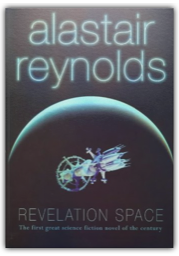
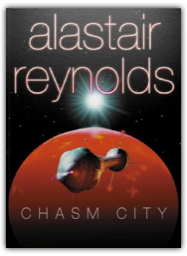
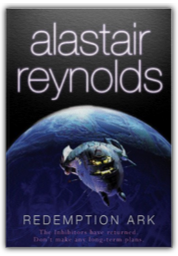
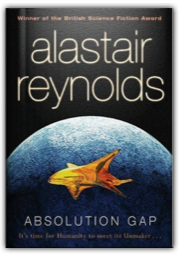

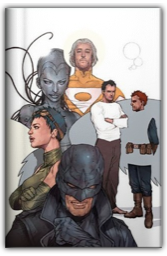

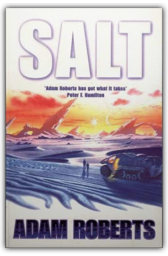
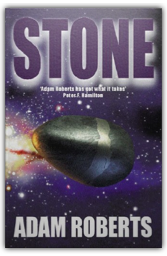
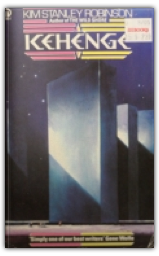
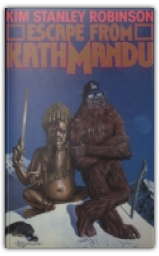
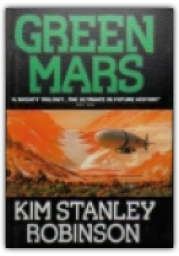
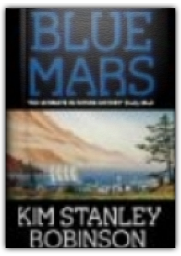

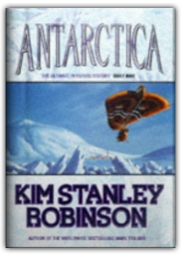
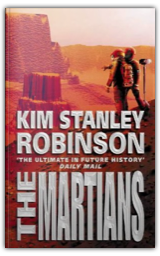
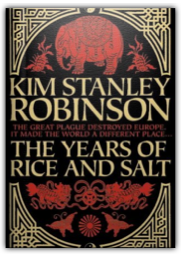
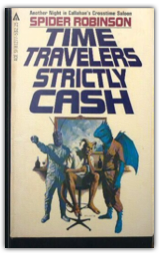
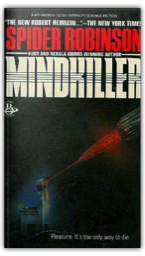
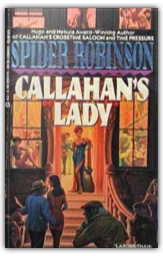
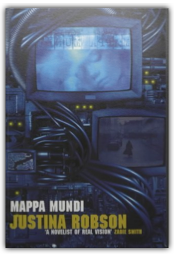
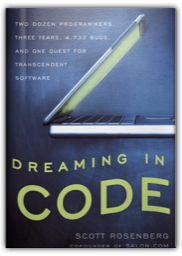


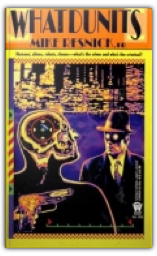

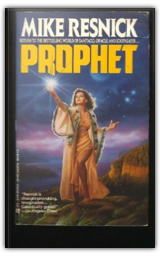
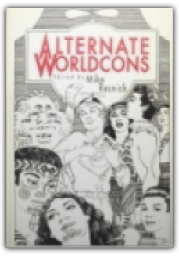

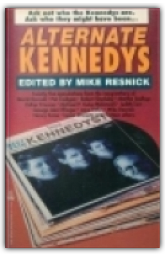
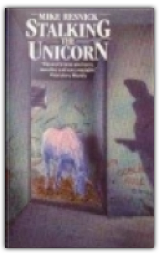
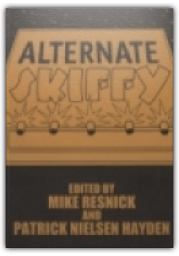
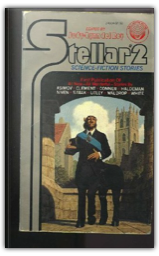
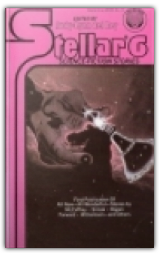
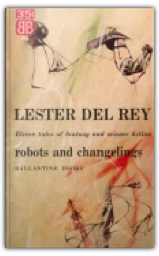
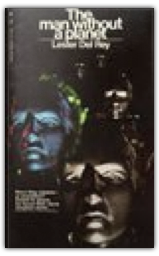
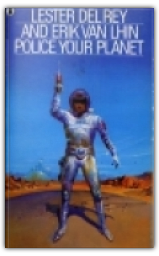
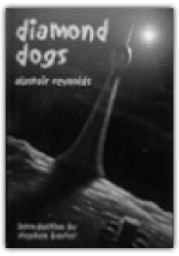
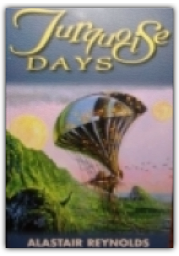
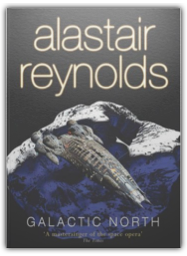
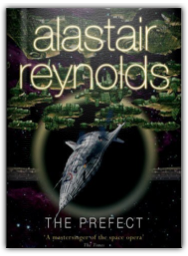
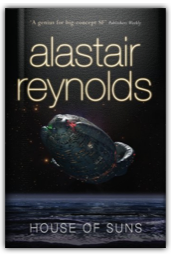

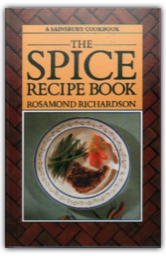
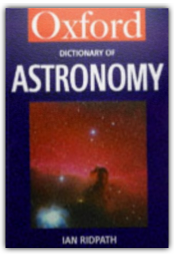
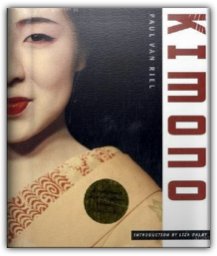

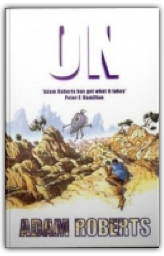
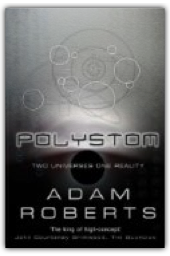
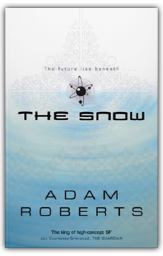




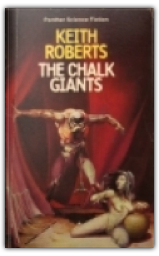
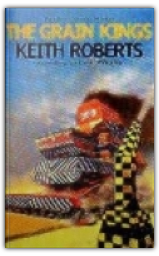
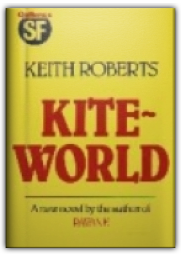
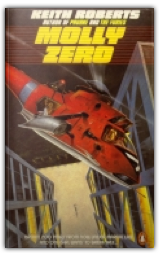
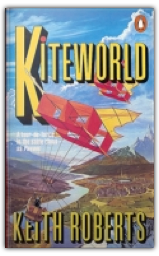
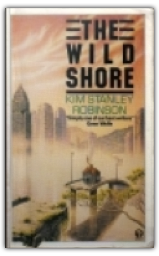
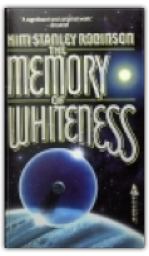


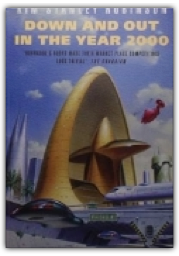

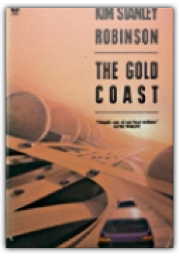
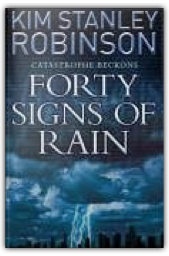
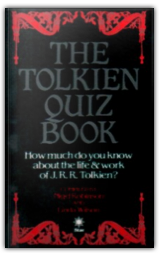
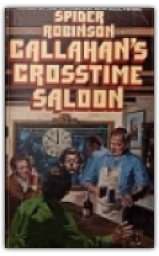
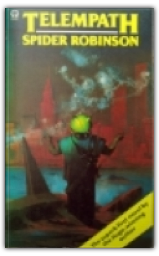
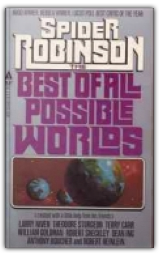
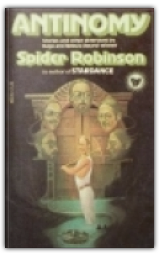
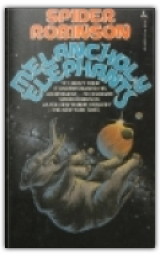
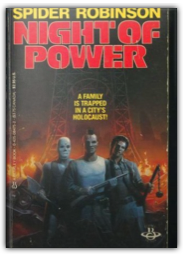
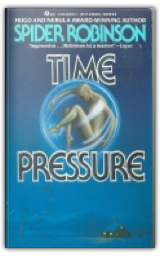
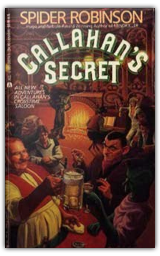
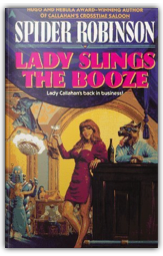
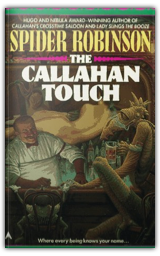

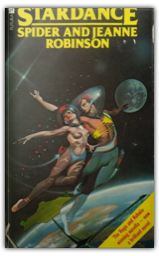


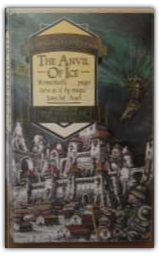


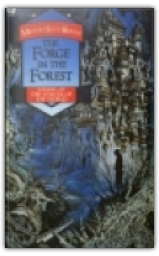
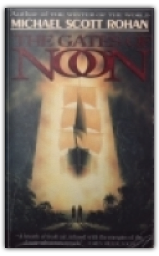



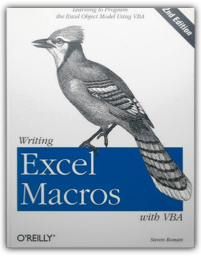

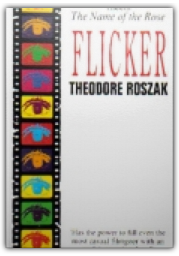
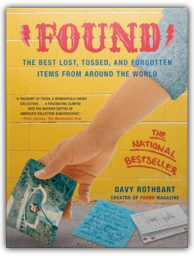

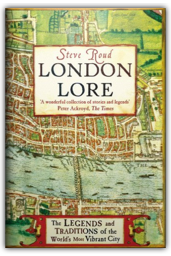

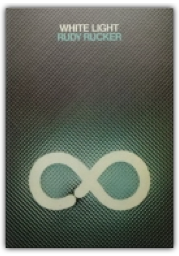
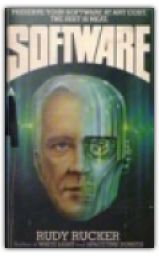

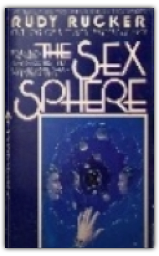
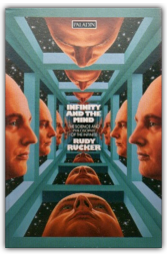
 Made with Delicious Library
Made with Delicious Library